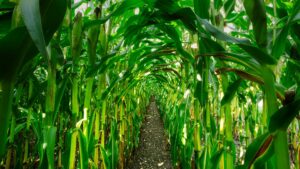The need to feed a growing population continues to drive innovations in the seed industry. The industry is increasingly challenged to produce more with less. Where will we find more land to grow next year’s crop? How can we increase yields but use less resources? What regulations need to change so we can ensure our crops can be traded around the world? The effort to find answers to these challenges is exactly what’s creating excitement and buzz in the seed industry.
We entered the year 2013 going into the second term of President Barack Obama’s administration. The seed industry has spent much of this year focusing on stepping up its presence in Washington, D.C., and spreading the message about the importance of seed amongst the country’s regulators.
While 2013 may be remembered in agriculture as the year with no Farm Bill, the seed industry has still been successful in helping the country understand what it brings to American agriculture. Great progress was made on phytosanitary standards and low-level presence, and the Accord put in place by the American Seed Trade Association and BIO has helped initiate the start of a generic marketplace.
So what other trends are we seeing as we prepare to enter 2014? The sentiment across the entire U.S. seed industry remains very positive. There is very strong demand for seed and that will only continue to grow.
Starts with Seed
“Seed companies have a lot of opportunities because we have to feed a really hungry planet,” says Matthias Haug, head of SeedGrowth for Bayer CropScience. “Therefore, we have to maximize our harvest—quality-wise and quantity-wise—over the next years. It’s really important.”
Karsten Neuffer, global head of Seedcare for Syngenta, agrees. “By 2050 we will have at least nine billion people on this planet, and that clearly adds greatly to the global food security challenge,” he says. “We believe we can make a strong contribution towards addressing that challenge. Our ambition is to help the world achieve greater food security by creating a step change in agricultural productivity. Most importantly we have to feed a growing global population in an environmentally friendly way. To help achieve this, Syngenta recently announced a long-term program called the Good Growth Plan. One of its key commitments is to increase productivity of 20 million smallholder farmers by 50 percent by 2020 without using more land, water and other scarce resources.”
This need to feed the world is driving innovation in the seed industry today. And perhaps no other sector within the seed industry is as focused on that goal as the seed treatment and enhancement sector. Last year, Bayer CropScience launched SeedGrowth, its fully integrated and comprehensive system for on-seed applications, while Syngenta has been increasing its focus on its Seedcare lineup of products. The emphasis is not just on crop protection products anymore, but rather companies such as Bayer CropScience and Syngenta are looking at seed treatment from a broader perspective, spending millions of dollars on how on-seed applications can increase yield.
“We really need the maximum protection for seeds in the future in order to produce a maximum harvest,” says Haug.
“With today’s focus on increasing farm productivity, clearly Seedcare is one of the most essential tools in the grower’s tool box,” adds Neuffer. “Not only does it provide a significant impact on a farm’s yields, but it’s also one of the most sustainable and environmentally friendly technologies out there, which usually comes with some of the lowest dose rates in terms of an application. That makes it one of the most exciting advances to look forward to.”
Rapid growth in the seed treatment and enhancement sector signifies that Neuffer is right—seed care is one of the most essential tools in every seed company’s portfolio today.
“The seed treatment market will continue to provide attractive growth. The total market is currently valued at about $3 billion and it seems likely it will continue to grow at double-digit rates,” says Neuffer, adding that the main factor that is supporting the growth will continue to be the incremental value seed treatments are bringing to farmers, such as its new seed-applied nematicide Clariva “which usually translates into an incremental return on the investment for the farmers of roughly three-to-one.”
“That’s an awfully exciting outlook. At Syngenta we are fully committed to Seedcare and we are making a particular effort to bring that technology to all our customers, but most importantly to seed companies who provide the products in a very professional and industrial way,” Neuffer says.
Industry initiatives are working to promote fruit and vegetable seeds directly to consumers.
Holistic Approach
What’s happening in the seed treatment sector signifies a larger movement that is occurring throughout the entire seed industry—a more holistic approach to selling seed.
“It’s much more than only selling products for profit. It’s a holistic view, and we’ve got the full picture because we are experts in seed growth overall,” says Haug. According to him, the seed industry is becoming more focused on bigger picture issues such as sustainability and growth across the entire value chain.
“It’s a really different view from just thinking about, say, seed treatment on its own. And we went away from that view because seed treatment normally means only the application of the chemical product, and we want to ensure we are securing sustainable, healthy, protected, and strong plant growth,” says Haug. “By following a more holistic approach, we create more value for the farmer, by increasing and improving their business growth in the future.”
The vegetable sector has already been doing a particularly good job of looking at the larger picture, realizing that it has to help promote its product in order for the entire value chain to be better off.
“In recent years, the industry has been paying more attention on how it can promote our fruit and vegetable products,” says Anton van Doornmalen, co-owner of Rijk Zwaan. “For example, our company is sponsoring schools to serve the kids with nice vegetable products; we are having a local veggie bender, which is a small group of kids who are showing us how they like to eat vegetables, so they are developing their own recipes; and we are in contact with fast food companies to supply them with healthy salads.”
Harmonizing global seed regulations continues to be a top priority for the seed industry.
Breaking Down Barriers
Harmonizing regulations has long been a focus of the seed industry, but with the global trade of seed increasing, making sure seed regulations are standardized and functional across borders has never been more important than it is now.
“The global movement of seed, so the free movement of seed, is one of the biggest challenges for the vegetable seed industry today,” says van Doornmalen. “A company like ours is breeding in 27 crops and within each crop we have various different types. The parental lines of those varieties are produced in one country, the seed is then shipped to various other countries to be produced, those seeds might then be shipped to another location where enhancement, quality control, packaging and so on will take place, and from there the seeds are then sent to many countries all over the world.”
Van Doornmalen says international phytosanitary measures can very much hamper the global movement of seeds. “The entire seed industry needs to work together to get this well harmonized in a way we can really move our seeds freely in the future,” he says. “That’s a huge challenge and that goes for phytosanitary issues as well as for seed health.”
There has been much progress on trade-related issues this year, and perhaps no region receives more heat when it comes to regulatory changes as Europe. However, Garlich von Essen, secretary-general of the European Seed Association, reports that progress is finally being made.
Earlier this year, the European Commission presented a long-awaited legislative package titled Healthier Animals and Plants for a Safer Agri-Food Chain. This package includes a proposal to revise plant health legislation and to establish a new regulation on the production and marketing of plant reproductive material, says von Essen.
According to von Essen, the European seed industry welcomed the ambition of the European Commission to provide a modern legal framework for seed that is adapted to the competitiveness and vitality of the industry. The aim of simplification and harmonization, by bringing all former crop-specific directives into a single regulation, will provide a stronger basis for the productivity, sustainability, diversity and quality of agriculture across Europe.
“Seed marketing legislation dates back to the 1960s and there have been constant amendments and changes, and we now basically need to clean it up to make it more accessible, not only to the regulators but also to us, the sector, and to also take account of new developments,” he explains. “The industry has matured quite a bit; we are now more involved than ever in cooperation with public bodies in, for example, the registration varieties in checking plant material for plant health issues. So actually the industry has moved from a mere subject to become more a partner.”
One of the main innovations of the package is to integrate seed under the control of the Food and Veterinary Office. Von Essen says this will help ensure the rules that are being decided at the European level are implemented in a harmonized manner, which is a precondition for a thriving common market for seed in Europe.
Bringing it Back to the Farmer
With all the focus on feeding a growing population, Golden Acres Genetics president Lou Buice says it’s still important to remember the needs of each farmer customer, something the independent seed companies still excel at.
“The farmer likes the opportunity to go and choose and not be forced into a specific product line or product offering,” says Buice. “As independent seedsmen, we’re able to go and look at a number of different products. We kind of look at it like a funnel—we’ve got a lot of access and we don’t really have limitations on the front end.”
Buice says the philosophy he teaches his employees in development and sales is simple—that they should focus on doing what other companies either can’t or aren’t willing to do to meet the customer’s needs. “So when that funnel goes down to the bottom, we see the other key is customer intimacy and knowing what that customer needs, and being able to position the product in a way that’s almost a razor-sharp focus in terms of getting the right product on the right acre,” he adds.
Haug says a renewed commitment to focus more on the customer is actually evolving how Bayer is marketing its products. “Our marketing approach was driven mainly in the past by technology—we have to be the best in all efficacy trials and so on,” he says. “However, we really have to look after our customer—we have to be much more customer-focused and ask ‘what is the need of the customer?’ It has to be a good product, but then we have to check afterwards if this very good product is fitting the needs of the customer. Customer centricity is very important for Bayer.”
Ends with Seed
It’s a very exciting time to be in seed, a sentiment that ASTA chairman Craig Newman says is being portrayed at industry events around the country. “For example, ASTA’s CSS and Seed Expo in Chicago each year is like the Super Bowl of the seed industry, and it has been increasing in attendance each year,” says Newman, who is president and CEO of AgReliant Genetics. The meeting’s attendance in 2012 increased by more than 200 from the year before, making it the highest-attended meeting since 1977.
“It’s interesting, I’ve had people ask me why [interest in seed] is growing, but I think it’s the innovation and the technology that people have to offer, and they know how important it is to be at industry events such as CSS if you’re in the seed business,” says Newman.
As 2014 rolls around, and the world’s population continues to climb, more and more eyes will be on agriculture and its ability to produce more food. Buice believes the seed industry will continue stepping up to meet the challenge. “[The biggest opportunity for seed] is continuing to have problems solved before they occur,” he says, “especially when it comes to more drought-tolerant crops and insect and weed resistance—I think the grower expects us to have solutions to those problems, and we need to deliver on them.”
Julie McNabb















